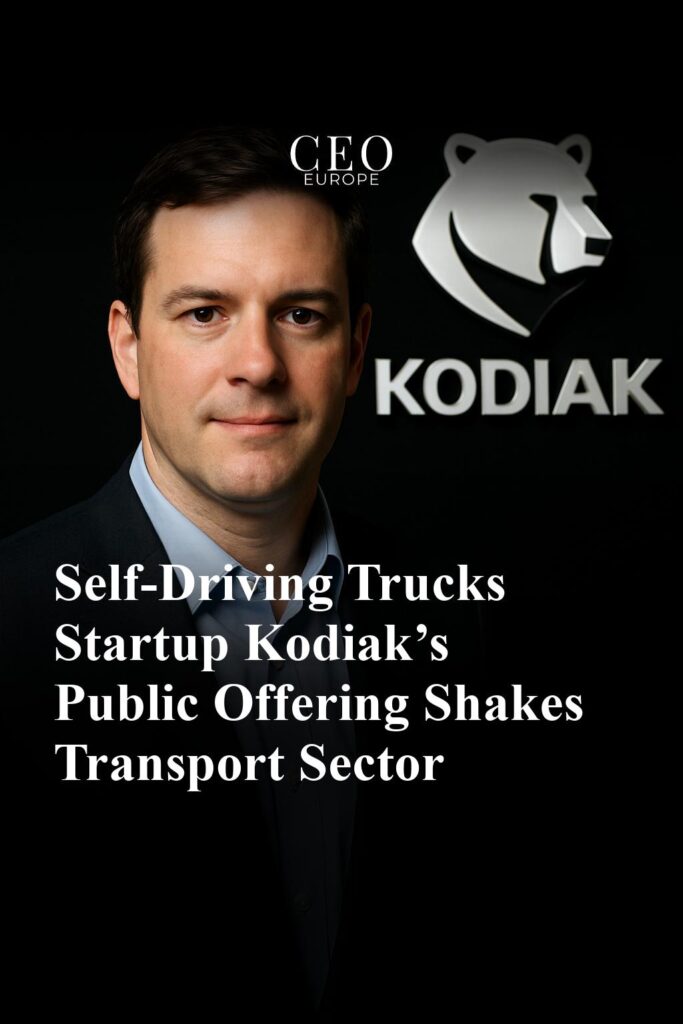1. Introduction
The self-driving trucks startup Kodiak has recently made a significant splash in the transport sector with its public offering, commanding a valuation of $2.5 billion. This move not only underscores Kodiak’s growing prominence among autonomous trucking pioneers but also signals a maturing industry on the cusp of transformation. The announcement aligns with broader developments in autonomous trucking 2025, as companies race to scale driverless logistics solutions amid rising demand. Kodiak’s entry into public markets reflects a pivotal moment where innovation and investment converge, reshaping the competitive landscape for self-driving trucks startups. Much like the early days of commercial aviation, where initial flights sparked new business models, Kodiak’s public offering is setting new benchmarks for technology adoption in freight transport [1].
2. Background
Kodiak Robotics, the self-driving trucks startup behind this breakthrough, was founded with a clear mission: to revolutionize logistics through cutting-edge autonomous technology. Since inception, Kodiak has hit key milestones, including successful long-haul driverless tests and strategic partnerships that demonstrate operational viability. One crucial factor in Kodiak’s public market debut was its merger with Ares Acquisition Corporation II, a move that facilitated a smoother market entry compared to traditional IPOs. This approach provided Kodiak with valuable capital and market access while positioning it to accelerate its self-driving truck deployments. By combining robust technology advancements with financial stability, Kodiak solidified its status as a front-runner in autonomous trucking [1].
3. Trends
The autonomous trucking landscape is rapidly evolving, with growing market demand fueled by labor shortages and efficiency pressures. Kodiak’s public offering exemplifies this momentum, bolstering investor confidence and raising the profile of self-driving trucks startups. Industry competition intensifies as other players like Gatik expand partnerships, notably with Loblaw, to deploy fleets by 2025. These developments illustrate a transformative trend where logistics companies seek automation for safer, cost-effective freight movement. Moreover, such public offerings inject fresh capital into the sector, accelerating infrastructure upgrades and research. This mirrors how digital transformation projects often rely on initial market confidence to enable widescale adoption—Kodiak’s public debut is a catalyst in this process [1].
4. Insights
Experts highlight Kodiak’s measured strategy, blending technological progress with key partnerships to penetrate the logistics market effectively. A notable example is the collaboration between Gatik and Loblaw, set to deploy 20 autonomous trucks for driverless delivery in Toronto by 2025—an initiative that underscores the commercial viability of autonomous freight. Additionally, the transport sector is witnessing leadership shifts, exemplified by Hyundai Supernal’s recent management changes following program adjustments. This shake-up exemplifies the broader industry recalibration as companies reassess strategies amid technological disruptions. By leveraging partnerships and adapting to market signals, Kodiak demonstrates how startups can navigate competitive pressures while advancing autonomous trucking innovation [1].
5. Forecast
Looking ahead to 2025, the autonomous trucking sector is poised for substantial growth, driven by technological advances and regulatory evolutions. Market projections suggest increased adoption as public offerings like Kodiak’s attract significant investments in AI and infrastructure. Such funding inflows will expedite the deployment of self-driving fleets, pushing the industry closer to mainstream logistics integration. Additionally, regulatory frameworks are expected to become more defined, addressing safety and operational standards. The trajectory is similar to the early phases of electric vehicle adoption, where initial investments and government policies paved the way for mass market acceptance. Consequently, Kodiak’s rise foreshadows a future where autonomous trucks become vital components of supply chains worldwide [1, 2].
6. How-to
For startups aiming to enter the autonomous transport sector, Kodiak’s blueprint offers valuable lessons. First, developing robust technological capabilities must be paired with strategic partnerships to facilitate real-world testing and adoption. For example, aligning with established logistics firms can provide access to operational data and deployment opportunities. Additionally, pursuing innovative financing routes like mergers with special purpose acquisition companies (SPACs), similar to Kodiak’s deal with Ares Acquisition Corporation II, can optimize capital raising beyond traditional IPOs. Equally important is navigating regulatory landscapes through proactive compliance and engaging with policymakers. These steps collectively form a roadmap to successfully scale operations in a competitive, evolving market. For further insights on transformative technology investments, explore our AI infrastructure deals analysis [1].
7. FAQ
– What are self-driving trucks and how do they work?
Self-driving trucks use advanced sensors, AI algorithms, and mapping to operate without human drivers, enabling safer and more efficient freight movement.
– How is Kodiak’s public offering different from traditional IPOs?
Kodiak went public through a merger with a special purpose acquisition company (SPAC), Ares Acquisition Corporation II, gaining quicker market access and liquidity compared to conventional IPO processes.
– What challenges do self-driving trucks face in regulatory compliance and public acceptance?
Regulatory hurdles involve stringent safety standards and testing approvals, while public acceptance depends on building trust through demonstrable safety records and transparent operations [1].
8. Conclusion
Kodiak’s public offering marks a defining moment for the transport sector, demonstrating the viability and investor appeal of self-driving trucks startups. With a $2.5 billion valuation, Kodiak positions itself at the forefront of the autonomous trucking revolution, driving forward innovations that will reshape logistics and freight transportation. As the industry continues to evolve, partnerships, regulatory clarity, and sustained investment will be crucial in realizing the full potential of autonomous technologies. Kodiak’s journey offers a glimpse into a future where driverless trucks are integral to efficient, scalable supply chains worldwide, heralding a new era of transportation [1].
—
Sources and references
1. TechCrunch – Self-Driving Trucks Startup Kodiak Goes Public and a Shake-Up at Hyundai’s Supernal
2. Explore AI infrastructure deals that are reshaping industries

